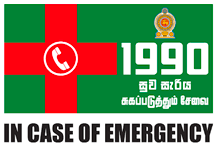Sri Lanka has had a sound primary healthcare approach since the mid-1920s (even before the Declaration of Alma-Ata in 1978). Sri Lanka has made notable progress in key healthcare indicators. Life expectancy at birth, maternal and child health as well as neonatal, infant and under-5 mortality rates are higher than the South Asian average. However, although Sri Lanka displays relatively good health indicators, emerging health challenges prevail.
The burden of non-communicable diseases (NCD) is a major health concern for the country. In 2017 NCDs accounted for 81% of total deaths. Population ageing in Sri Lanka is accelerating at a faster rate than in other South Asian countries. The proportion of Sri Lankans above the age of 60 years will double by 2040, accounting for one-forth of the total population of the country. A large majority of older people (about 7%) reside in rural areas.
The government has recognized that in order to achieve the United Nations health related sustainable development goals (SDGs) and universal health coverage, a stronger primary healthcare system is essential. The Ministry of Health and Ministry of Provincial Councils and Local Government in Sri Lanka has embarked on a 5-year project to strengthen primary healthcare. The development objective of the project is to increase the utilization and quality of people-centered primary healthcare services.
It is essentially a home-grown model for reorganizing primary medical care services, that comes under the banner ‘Reorganizing Primary Health Care in Sri Lanka- Preserving our progress, Preparing our future’. The move is also a means of furthering our health gains and thereby preparing the local health care system in meeting evolving challenges, notably the burden of NCDs. Diabetes, cardiovascular diseases, ischaemic heart diseases, stroke, respiratory conditions and cancers are notable among these.
This approach is backed by strong evidence and highlights 3 thematic areas of the PSSP :
- Reorganizing primary healthcare to meet Sri Lanka’s needs.
- Improving information management systems for people-centric services.
- Strengthening the health sector through key system improvements.
The PSSP aims to address both the demand and supply-side constraints of a comprehensive PHC system :
- On the demand side, it includes proactive outreach activities and strong citizen feedback mechanisms to change health-seeking behaviour.
- On the supply side, it incentivizes the use of PMCIs by improving their capabilities and responsiveness to population demands.
- The successful implementation of this project will allow Sri Lanka to:
- Equip primary healthcare providers with improved skills in team management and patient-centered service delivery. Effectively manage and control the rise of NCDs.
- Establish population-based information management systems for NCD programmes.






